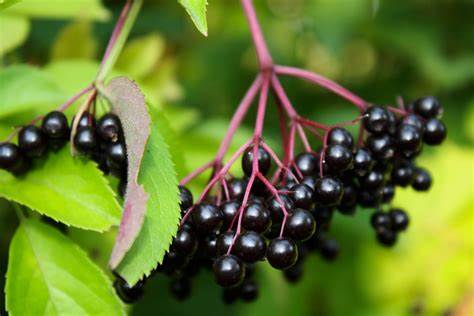Goldenseal is a herb that has been used for centuries for its medicinal properties. It is a popular natural remedy for a wide range of ailments including digestive issues, skin conditions, and respiratory problems. This powerful herb has been found to have antibacterial, anti-inflammatory, and immune-boosting properties. Goldenseal is easily accessible and has been used as a natural alternative to mainstream medicine. In this post, we will explore the benefits of goldenseal and how it can be used to heal and improve overall health. From easing cold symptoms to treating infections, read on to discover the healing powers of goldenseal.
Shop Amazon and Save on Goldenseal
1. Introduction to goldenseal and its rich history
Goldenseal, a vibrant and powerful herb, has captivated the attention of herbal enthusiasts and health-conscious individuals alike for centuries. Known for its distinctive yellow root and delicate white flowers, goldenseal holds a special place in traditional medicine and has been revered for its multitude of healing properties.
With a rich history deeply rooted in Native American traditions, goldenseal has been used for generations to treat various ailments and promote overall well-being. Native tribes, including the Cherokee and Iroquois, considered it a sacred herb and utilized it for its potent medicinal qualities.
The Latin name for goldenseal, Hydrastis canadensis, aptly reflects its origins. Native to the woodlands of North America, particularly the eastern regions of the United States and Canada, goldenseal thrives in the shaded areas of moist forests, where it flourishes under the dappled sunlight.
The historical significance of goldenseal extends beyond its medicinal attributes. Early European settlers in North America, upon discovering the herb, quickly recognized its potential. They began incorporating goldenseal into their own traditional practices and trading it as a valuable commodity.
Today, goldenseal continues to be highly regarded for its remarkable healing powers. Its extensive range of uses includes treating respiratory conditions, digestive disorders, and skin irritations, among others. The active compounds found within goldenseal, such as berberine and hydrastine, contribute to its antimicrobial, anti-inflammatory, and immune-boosting properties.
As we delve deeper into the fascinating world of goldenseal, we will explore its various uses and benefits, shedding light on the centuries-old wisdom that continues to resonate in our modern-day pursuit of natural healing. Join us on this journey as we unlock the secrets of goldenseal and uncover the remarkable potential it holds for enhancing our well-being.
2. Understanding the medicinal properties of goldenseal
Goldenseal, also known as Hydrastis canadensis, is a powerful herbal remedy that has been used for centuries due to its numerous medicinal properties. This herb is native to North America and has long been revered by Native American tribes for its healing abilities.
One of the main components of goldenseal is berberine, which is known for its antimicrobial properties. This makes goldenseal a popular choice for treating various infections, including respiratory, digestive, and urinary tract infections. It can help fight off harmful bacteria, viruses, and fungi, promoting a healthy immune system.
In addition to its antimicrobial effects, goldenseal is also a potent anti-inflammatory agent. It can help reduce inflammation in the body, making it useful for conditions such as arthritis, allergies, and skin irritations. The soothing properties of goldenseal can provide relief from discomfort and promote healing.
Furthermore, goldenseal is recognized for its ability to support digestive health. It can aid in digestion by stimulating the production of digestive enzymes, improving nutrient absorption, and reducing symptoms of indigestion and bloating. This herb has also been used to alleviate gastrointestinal conditions such as ulcers and diarrhea.
Another notable benefit of goldenseal is its potential as a natural immune booster. It contains compounds that can enhance the activity of white blood cells, allowing the body to better defend against infections and diseases. Regular use of goldenseal may help strengthen the immune system and promote overall wellness.
It is important to note that goldenseal should be used with caution and under the guidance of a healthcare professional. Its powerful properties make it effective, but also potentially potent. Pregnant or breastfeeding women, as well as individuals with certain medical conditions, should consult their healthcare provider before using goldenseal.
In conclusion, goldenseal is a remarkable herb with a wide range of medicinal properties. From its antimicrobial and anti-inflammatory effects to its digestive support and immune-boosting abilities, goldenseal has proven to be a valuable natural remedy. However, it is always wise to seek professional advice to ensure its safe and appropriate use for your specific needs.
3. Exploring the traditional uses of goldenseal in herbal medicine
Shop Amazon and Save on Goldenseal
Goldenseal, a herb native to North America, has been used for centuries in traditional herbal medicine. Its roots and rhizomes contain a powerful compound called berberine, which is known for its antimicrobial, anti-inflammatory, and immune-boosting properties.
One of the most well-known traditional uses of goldenseal is for its ability to support respiratory health. It has been used to relieve symptoms of respiratory infections, such as congestion, coughs, and sore throats. The berberine in goldenseal has been found to inhibit the growth of harmful bacteria and viruses, making it a popular natural remedy for respiratory ailments.
Another traditional use of goldenseal is for digestive health. It has been used to soothe digestive issues such as diarrhea, stomach ulcers, and indigestion. The antimicrobial properties of berberine help to combat harmful bacteria in the gut, while its anti-inflammatory properties can reduce inflammation in the digestive tract.
Goldenseal has also been used topically for various skin conditions. Its antimicrobial properties make it effective in treating skin infections, wounds, and burns. It can be applied as a poultice or used in creams and ointments to promote healing and reduce inflammation.
In addition to its medicinal uses, goldenseal has also been used traditionally as a natural remedy for menstrual issues, urinary tract infections, and to support the immune system during times of illness.
While goldenseal has a long history of traditional use, it’s important to note that more research is needed to fully understand its effectiveness and potential side effects. It’s always advisable to consult with a healthcare professional before using goldenseal or any other herbal remedy for medicinal purposes.
In conclusion, goldenseal has a rich history in traditional herbal medicine, with uses ranging from respiratory health to digestive support and skincare. Its powerful compound, berberine, gives it antimicrobial and anti-inflammatory properties that have made it a popular natural remedy for various ailments. However, further research is needed to fully uncover its potential benefits and ensure its safe use.
4. The active compounds in goldenseal and their health benefits
Goldenseal, a popular herb native to North America, has been used for centuries due to its remarkable healing properties. This powerful herb contains several active compounds that contribute to its numerous health benefits.
One of the key active compounds found in goldenseal is berberine. Berberine is known for its antimicrobial properties, making it effective in fighting off various types of infections. It has been used to treat respiratory infections, urinary tract infections, and even skin infections. By inhibiting the growth of harmful bacteria, berberine helps support the body’s immune system and promotes faster healing.
Another notable compound in goldenseal is hydrastine. Hydrastine is known for its ability to constrict blood vessels, which can be beneficial in managing conditions such as nasal congestion and allergies. By reducing inflammation and narrowing blood vessels, it can help alleviate symptoms associated with sinusitis, hay fever, and other respiratory issues.
Goldenseal also contains alkaloids such as canadine and berberastine, which have been found to possess anti-inflammatory properties. These compounds help reduce inflammation in the body, making goldenseal a potential natural remedy for conditions like arthritis, digestive disorders, and skin irritations.
Additionally, goldenseal is rich in antioxidants, which play a crucial role in protecting our cells from damage caused by free radicals. The antioxidant properties of goldenseal contribute to its anti-aging benefits and may also help reduce the risk of chronic diseases such as heart disease and cancer.
It’s important to note that while goldenseal offers a range of potential health benefits, it should be used with caution and under the guidance of a healthcare professional. As with any herbal supplement, it’s essential to consider individual factors and potential interactions with medications or existing health conditions.
In conclusion, the active compounds found in goldenseal, including berberine, hydrastine, and alkaloids, contribute to its impressive health benefits. From fighting off infections to reducing inflammation and providing antioxidant protection, goldenseal continues to be a valuable herb in the realm of natural healing.
5. How goldenseal can support immune health and fight infections
Goldenseal, scientifically known as Hydrastis canadensis, is a powerful herb that has been used for centuries for its healing properties. One of the key benefits of goldenseal is its ability to support immune health and fight infections.
Goldenseal contains a compound called berberine, which has been shown to have antimicrobial properties. This means that it can help kill or inhibit the growth of bacteria, viruses, and fungi, making it an effective natural remedy for various infections.
In particular, goldenseal has been traditionally used to treat respiratory infections such as the common cold, flu, and sinusitis. It can help relieve symptoms like congestion, cough, and sore throat, while also supporting the body’s immune response to combat the underlying infection.
Additionally, goldenseal can be beneficial for gastrointestinal infections and digestive issues. It has a soothing effect on the mucous membranes of the digestive tract, helping to reduce inflammation and fight off harmful bacteria. This makes it a valuable herb for conditions like diarrhea, gastritis, and urinary tract infections.
Moreover, goldenseal has been found to possess anti-inflammatory properties, which further contributes to its immune-supporting abilities. By reducing inflammation in the body, it can help alleviate symptoms associated with various inflammatory conditions and promote overall wellness.
To incorporate goldenseal into your routine, it is commonly available in the form of capsules, tinctures, or teas. However, it is important to note that goldenseal should be used with caution and under the guidance of a healthcare professional, as it can interact with certain medications and may not be suitable for everyone.
In conclusion, goldenseal is a remarkable herb that offers numerous health benefits, particularly in supporting immune health and fighting infections. By harnessing its healing powers, you can potentially enhance your body’s natural defense mechanisms and promote overall well-being.
6. Goldenseal as a natural remedy for digestive issues
Goldenseal, a powerful herb native to North America, has gained significant recognition for its remarkable healing properties. Among its many uses, goldenseal has been revered for its ability to alleviate digestive issues and promote overall gut health.
Digestive problems, such as indigestion, bloating, and stomach cramps, can be disruptive to our daily lives. This is where goldenseal comes to the rescue. The herb contains a compound called berberine, which possesses potent antimicrobial properties. Berberine has been shown to combat harmful bacteria in the digestive tract, helping to restore the delicate balance of gut flora.
Moreover, goldenseal acts as a natural anti-inflammatory agent, soothing irritated gastrointestinal tissues and reducing inflammation in the digestive system. This can be particularly beneficial for individuals suffering from conditions such as gastritis or irritable bowel syndrome (IBS).
In addition to its antimicrobial and anti-inflammatory properties, goldenseal is known for its ability to stimulate the production of bile. Bile plays a crucial role in the digestion and absorption of fats. By enhancing bile production, goldenseal aids in the breakdown of dietary fats, preventing issues like fatty liver and improving overall digestion.
To reap the benefits of goldenseal for digestive health, it can be consumed in various forms. One popular method is to brew goldenseal tea by steeping the dried herb in hot water. This allows the active compounds to infuse into the tea, creating a soothing and therapeutic beverage. Alternatively, goldenseal extracts and capsules are also available for convenient consumption.
However, it is important to note that while goldenseal offers promising benefits, it is always advisable to consult with a healthcare professional before incorporating it into your routine, especially if you have any pre-existing medical conditions or are taking medications.
In conclusion, goldenseal’s natural healing properties make it a valuable remedy for digestive issues. From combating harmful bacteria to reducing inflammation and aiding in fat digestion, this herb has proven to be a reliable ally for maintaining a healthy gut. Consider exploring the wonders of goldenseal and experience the transformative effects it can have on your digestive well-being.
Shop Amazon and Save on Goldenseal
7. The potential anti-inflammatory properties of goldenseal
Goldenseal, a herb native to North America, has been revered for its potential anti-inflammatory properties. This medicinal plant has long been used in traditional medicine to alleviate various health conditions, thanks to its active compound called berberine.
Research suggests that goldenseal may possess powerful anti-inflammatory effects. Inflammation is a natural response of the body to injury or infection, but chronic inflammation can lead to various health issues. The berberine in goldenseal has been found to inhibit certain inflammatory pathways, potentially reducing inflammation in the body.
Inflammation is implicated in numerous conditions, such as arthritis, allergies, and digestive disorders. Goldenseal’s anti-inflammatory properties may offer relief to individuals suffering from these ailments. Additionally, it may help promote healthy skin by soothing irritated or inflamed skin conditions like eczema or psoriasis.
However, it is important to note that more research is needed to fully understand the extent of goldenseal’s anti-inflammatory effects and its potential applications in clinical settings. As with any herbal remedy, it is advisable to consult with a healthcare professional before incorporating goldenseal into your healthcare routine.
In conclusion, goldenseal shows promise as a potential natural remedy for alleviating inflammation. Its active compound, berberine, may help in reducing inflammation and providing relief for various conditions. As scientific exploration continues, we can hope to unlock more of the healing powers of goldenseal and further understand its benefits in promoting overall health and well-being.
8. Using goldenseal for skin health and wound healing
Goldenseal, a herb native to North America, has been revered for centuries for its remarkable healing properties. While it is commonly known for its immune-boosting and antimicrobial effects, goldenseal also holds great potential when it comes to skin health and wound healing.
One of the key components of goldenseal is berberine, a powerful compound known for its anti-inflammatory and antibacterial properties. These properties make goldenseal an excellent choice for treating various skin conditions such as acne, eczema, and psoriasis. Its ability to reduce inflammation can help calm irritated skin, while its antibacterial effects can help combat acne-causing bacteria.
Furthermore, goldenseal has been found to promote wound healing and tissue repair. When applied topically, it can aid in the recovery of minor cuts, scrapes, and burns. The herb’s antimicrobial properties can help protect the wound from infection, while its anti-inflammatory effects may reduce swelling and promote faster healing.
To harness the benefits of goldenseal for skin health and wound healing, there are a few different methods of application. One option is to create a goldenseal-infused salve by combining the herb with a carrier oil like coconut oil or beeswax. This salve can be applied directly to the affected area for localized treatment.
Alternatively, goldenseal can be used as a soothing herbal bath. By adding a decoction or infusion of goldenseal to warm bathwater, the healing properties of the herb can be absorbed by the skin, providing a more holistic approach to skin health and wound healing.
It’s important to note that while goldenseal can be highly beneficial for skin health, it is always recommended to consult with a healthcare professional before using any herbal remedies, especially if you have any underlying medical conditions or are taking medications.
In conclusion, goldenseal offers a natural and potent solution for promoting skin health and facilitating wound healing. Incorporating this herb into your skincare routine or using it for minor wounds can provide you with the healing powers of nature, allowing you to experience the remarkable benefits of goldenseal firsthand.
9. Dosage and safety considerations when using goldenseal
Dosage and safety considerations are crucial when using goldenseal to ensure optimal results and prevent any potential risks. While goldenseal offers numerous health benefits, it is important to use it responsibly and follow recommended guidelines.
When it comes to dosage, it is best to consult with a healthcare professional or herbalist who can provide personalized advice based on your specific needs and health condition. Generally, goldenseal is available in various forms, including capsules, tinctures, teas, and ointments. Each form may have different recommended dosages, so it’s essential to carefully read and follow the instructions provided by the manufacturer.
In terms of safety considerations, it is important to note that goldenseal should not be used by everyone. Pregnant and breastfeeding women should avoid goldenseal due to its potential effects on the uterus and newborns. Additionally, individuals with liver disease, high blood pressure, or heart conditions should exercise caution and consult a healthcare professional before using goldenseal.
Long-term use of goldenseal should be avoided as it may lead to adverse effects on the liver. It is recommended to take goldenseal for short periods of time, typically no longer than three weeks, unless otherwise directed by a healthcare professional.
Furthermore, it is crucial to be aware of potential interactions with other medications or supplements. Goldenseal may interfere with the effectiveness of certain drugs, such as anticoagulants, antibiotics, and blood pressure medications. Therefore, it is always wise to inform your healthcare provider about any herbal supplements you are taking to prevent any potential interactions or complications.
In conclusion, while goldenseal offers promising healing properties, it is essential to approach its usage with caution. Consulting a healthcare professional, following recommended dosages, and being aware of potential safety considerations and interactions will help ensure a safe and effective experience when incorporating goldenseal into your health routine.
10. Other potential uses and future research on goldenseal
Goldenseal, with its rich history and extensive traditional use, has attracted the attention of researchers and scientists who are eager to explore its potential uses beyond its well-known benefits. While it has been primarily recognized for its antimicrobial and immune-boosting properties, there are several other potential uses that warrant further investigation.
One area of interest is the potential anti-inflammatory effects of goldenseal. Preliminary studies have suggested that certain compounds found in goldenseal, such as berberine, may possess anti-inflammatory properties. This has sparked curiosity among researchers who are keen to delve deeper into its mechanisms of action and potential applications in managing inflammatory conditions.
Furthermore, goldenseal has shown promise in supporting digestive health. Some studies have indicated that goldenseal may have a positive impact on gut health by promoting a healthy balance of gut bacteria and reducing the risk of certain digestive disorders. This opens up the possibility of incorporating goldenseal into natural remedies for gastrointestinal issues, subject to further research and clinical trials.
In addition to its potential medicinal uses, goldenseal has also garnered interest in the field of skincare. Its antibacterial and anti-inflammatory properties make it a possible ingredient for topical products targeting acne, eczema, and other skin conditions. However, more research is needed to determine the optimal formulations and concentrations for maximum efficacy and safety.
As the scientific community continues to explore the therapeutic potential of goldenseal, it is essential to note the importance of conducting rigorous studies and clinical trials to validate its benefits. While traditional use and anecdotal evidence provide a strong foundation, scientific research is crucial for establishing goldenseal’s effectiveness and safety profiles across various applications.
In conclusion, the healing powers of goldenseal extend beyond its well-known uses. Ongoing and future research holds the promise of unveiling its potential in areas such as inflammation, digestive health, and skincare. As more knowledge is gained, goldenseal may find its way into a wider range of natural remedies and contribute to our overall well-being.
11. Conclusion: Incorporating goldenseal into your wellness routine
Incorporating goldenseal into your wellness routine can be a game-changer for your health. This powerful herb has been used for centuries due to its remarkable healing properties and numerous benefits. From supporting immune function to promoting digestive health, goldenseal offers a holistic approach to well-being that is worth exploring.
One of the key uses of goldenseal is its ability to support the immune system. Its natural compounds, such as berberine, have been shown to have antimicrobial and immune-stimulating effects. By incorporating goldenseal into your daily routine, you can give your immune system the boost it needs to fight off infections and stay healthy.
Not only does goldenseal support the immune system, but it also has impressive anti-inflammatory properties. This makes it a valuable tool in managing conditions such as arthritis and allergies. By including goldenseal in your wellness routine, you can potentially reduce inflammation in the body and experience relief from various inflammatory symptoms.
Additionally, goldenseal is known for its positive effects on digestive health. It has been traditionally used to alleviate digestive issues such as indigestion, diarrhea, and stomach discomfort. The herb can help promote healthy digestion by stimulating the production of digestive enzymes and reducing inflammation in the digestive tract.
In conclusion, incorporating goldenseal into your wellness routine can offer a multitude of benefits for your overall health and well-being. Whether you’re looking to boost your immune system, manage inflammation, or support your digestive health, this versatile herb has got you covered. However, it is important to consult with a healthcare professional before adding any new supplements to your routine, especially if you have any underlying medical conditions or are taking medications. With the right guidance, goldenseal can become a valuable addition to your holistic approach to wellness.
We hope you found our exploration of the healing powers of Goldenseal informative and insightful. This powerful herb has been used for centuries for its numerous health benefits, and we have uncovered some of its most notable uses in this blog post. From boosting the immune system to alleviating digestive issues, Goldenseal has proven to be a versatile and potent natural remedy. Whether you are seeking to incorporate it into your daily routine or exploring its potential as a holistic alternative, we hope this article has provided you with valuable information. Embrace the healing powers of Goldenseal and experience its many benefits for yourself.
Shop Amazon and Save on Goldenseal
——————————



